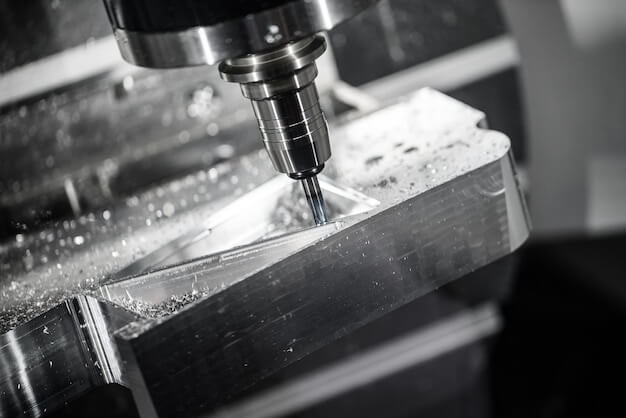In the world of manufacturing and production, various techniques are utilized for refining products to ensure utmost efficiency and quality. One such technique is bead blasting, widely employed during Computer Numerical Control (CNC) machining processes. This article aims to familiarize you with this fascinating aspect of CNC machining and explain how it contributes its effort towards success.
Bead blasting can often be a valuable and necessary step in product realization in many industries right from automotive, aerospace, medical devices manufacture, and more. It so happens because it crucially influences not only aesthetics but also performance characteristics of parts produced via CNC machining.
What is Bead Blasting?
Bead blasting is essentially a process where small glass beads are blasted against a surface at high speed to clean or smooth that particular surface without causing damage. The primary intention behind implementing this procedure is to improve the overall finish and look of an otherwise rough machined part. It’s a form of abrasive blasting that polishes a material, stripping away any surface imperfections or contaminants.
The Role of Bead Blasting in CNC Machining
Bead blasting becomes particularly relevant when dealing with CNC machining. CNC machines operate under computer-run control programs allowing operators with immense precision and consistency while creating components. However, upon completion of this accurate production process, there might remain minute irregularities on the surfaces created due to tooling marks, discoloration or unsightly burrs which sometimes prominently stand out depending on the materials used like aluminum, stainless steel and others. This is where bead blasting steps in.
By employing bead blasting post-CNC machining, manufacturers can achieve uniform matte or satin surface finishes giving parts an appealing aesthetic as well as functional value by mitigating possibilities of rust formation, improving conductivity, increasing wear resistance or providing an improved bond for coatings.
How does Bead Blasting work?
Now let us dive deep to understand the working of bead blasting. The process works as a closed-loop system, where glass beads are blasted from a high-speed nozzle onto designated surfaces. Blasting machine’s pressure setting controls the force applied which further determines intensity and impact on materials ensuring there’s no over-blasting or potential for damage.
After bombarding the surface with pressurized glass beads, they are redirected back to a recycle bin; it is here clean good quality beads get separated from dust and broken ones for reuse.
Plenty of factors come into play when achieving a flawless bead blasted finish such as bead size, blasting pressure, dwell time, etc. These variables are manipulated according to needs which defines whether we desire aggressive cleaning, subtle peening or more aesthetic finishing for our components.
Safety Implications
While bead blasting can offer manufacturers an array of benefits, safety concerns cannot be brushed aside. Incorrectly performed bead blasting can lead detrimental health implications due to dust inhalation. Therefore, adequate safety gear including respirators, goggles, and protective clothing must be worn and well-ventilation ensured in the work environment.
Summing up, if you’re seeking a technique to enhance your CNC machined parts through effective, efficient cleaning or aesthetically pleasing finishing while preserving their structural integrity, bead blasting could indeed prove beneficial. Be it robust industrial applications or highly intricate, precision detailing ones, gaining insightful knowledge about this procedure would undeniably make way for smarter manufacturing decisions.
Other Articles You Might Enjoy
- Exploring Bead Blasting in CNC Machining(weld line Wanda)
Bead blasting is an essential component of computer numerical control (CNC) machining. It involves the use of tiny beads under high pressure to smooth out surfaces, deburr parts, remove surface…
- Innovative CNC Machining for Advanced Spacecraft Components
Introduction: CNC Machining and its role in Spacecraft Components Computer Numerical Control (CNC) machining has, over the years, proven to be one of the most integral pillars within manufacturing industries.…
- The Economics of Using Recycled Materials in CNC Machining
Introduction to CNC Machining and Recycled Materials CNC (Computer Numerical Control) machining stands as a cornerstone in modern manufacturing, enabling the precise and automated cutting of materials into specific shapes…









